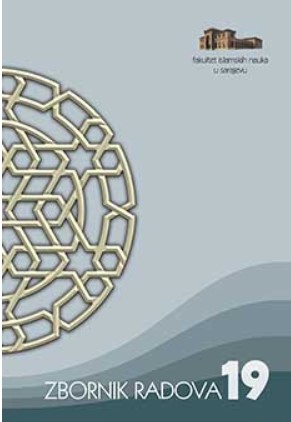ULOGA VEZNIKA U SEMANTICI KONTEKSTA U ARAPSKOME JEZIKU
ROLE OF CONJUNCTIONS IN THE SEMANTIC CONTEXTS OF ARABIC LANGUAGE
Author(s): Amira Trnka-UzunovićSubject(s): Theoretical Linguistics, Syntax, Semantics
Published by: Fakultet islamskih nauka u Sarajevu
Keywords: types of words; conjunctions; conjunction classification; making connections with conjunctions; semantic features of conjunctions;
Summary/Abstract: Conjunctions are not fully meaningful, unchangeable words which are classified as particles, one of the three types of words as defined by traditional Arabic grammar. Conjunctions are non-active particles which do not react to the change of names which follow them. When content is connected by a conjunction, it creates a phrasal unit which is known in Arabic grammar as ‘aṭfu n-nasaqior al-‘atfu bi l-ḥarfi (joined-up words, expressions and sentences). Nine conjunctions connect words: wa (I, a), fa (so), ṯumma (then), ḥattā (even), ’aw, ’am (or), bal (however, but), lākin (but), and lastly, lā (neither, nor). According to Arabic syntax, conjunctions are divided on the basis of two criteria. One is defined by the relationship among connected elements, and the other by the type of connected elements. Given that the first criterion includes two aspects of a link, in the verbal (ḥukman i‘rābiyyan) and in the semantic sense (ḥukman ma‘nawiyyan), conjunctions are divided in two parts. The first includes conjunctions which connect the conjunctive elements in an absolute sense (muṭlaqan), which implies that those elements are partaking in the connection which also implies a common regens. This results in the flexion of connected elements which is explicitly expressed by the same logical relation, the affirmative or the negative meaning of the two connected elements. To this category belong the conjunctions wa, fa, ṯumma, ḥattā, ’aw and ’am, but only an aspect of it, the connected ’am (’am muttaṣilatun). The remaining three conjunctions (bal, lā and lākin) realize only a formal connection, as reflected in the flexion of connected elements.
Journal: Zbornik radova Fakulteta islamskih nauka u Sarajevu
- Issue Year: 2015
- Issue No: 19
- Page Range: 145-164
- Page Count: 20
- Language: Bosnian

